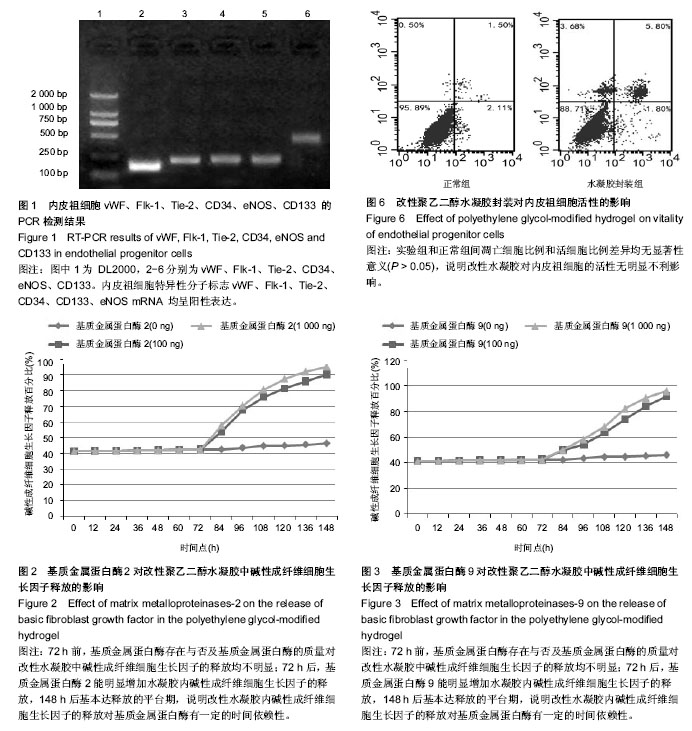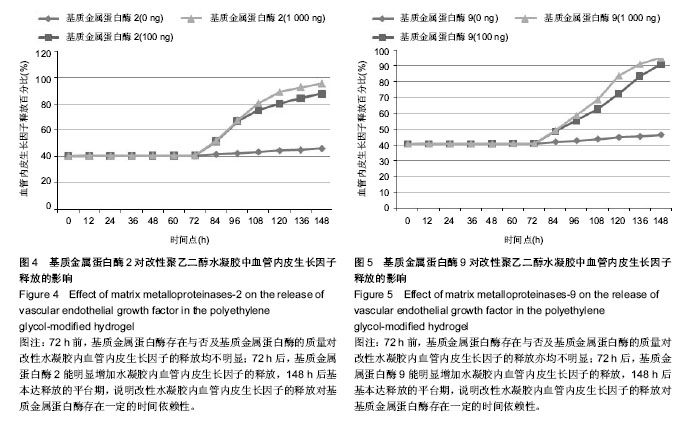| [1] Guan J,Sacks MS,Beckman EJ,et al.Synthesis, characterization, and cytocompatibility of elastomeric, biodegradable poly(ester-urethane)ureas based on poly(caprolactone) and putrescine.J Biomed Mater Res 2002;61(3):493-503.
[2] Urbich C,Heeschen C,Aicher A,et al.Relevance of monocytic features for neovascularization capacity of circulating endothelial progenitor cells. Circulation.2003;108(20): 2511-2516.
[3] Beltrami AP,Barlucchi L,Torella D,et al.Adult cardiac stem cells are multipotent and support myocardial regeneration. Cell.2003;114(6):763-776.
[4] Miranville A,Heeschen C,Sengenes C,et al.Improvement of postnatal neovascularization by human adipose tissue-derived stem cells.Circulation. 2004;110(3): 349-355.
[5] Ferrara N,Alitalo K.Clinical applications of angiogenic growth factors and their inhibitors. Nat Med.1999;5(12): 1359-1364.
[6] Schumacher B,Pecher P,von SBU,et al.Induction of neoangiogenesis in ischemic myocardium by human growth factors: first clinical results of a new treatment of coronary heart disease. Circulation.1998;97(7):645-650.
[7] Baumgartner I,Pieczek A,Manor O,et al.Constitutive expression of phVEGF165 after intramuscular gene transfer promotes collateral vessel development in patients with critical limb ischemia. Circulation.1998;97(12):1114-1123.
[8] Jackson KA,Majka SM,Wang H,et al.Regeneration of ischemic cardiac muscle and vascular endothelium by adult stem cells.J Clin Invest.2001;107(11):1395-1402.
[9] Mooney DJ,Vandenburgh H.Cell delivery mechanisms for tissue repair. Cell Stem Cell.2008;2(3):205-213.
[10] Asahara T,Marohara T,Sullivan A,et al.Isolation of putative progenitor endothelial cells for angiogenesis. Science. 1997; 275(53):964-967.
[11] Lazarous DF,Shou M,Stiber JA,et al.Pharmacodynamics of basic fibroblast growth factor: route of administration determines myocardial and systemic distribution. Cardiovasc Res.1997;36(1):78-85.
[12] Kim TK,Burgess DJ.Pharmacokinetic characterization of 14C-vascular endothelial growth factor controlled release microspheres using a rat model.J Pharm Pharmacol. 2002; 54(7):897-905.
[13] Kipshidze N,Chekanov V,Chawla P,et al.Angiogenesis in a patient with ischemic limb induced by intramuscular injection of vascular endothelial growth factor and fibrin platform.Tex Heart Inst J.2000;27(2):196-200.
[14] Niklason LE,Gao J,Abbott WM,et al.Functional arteries grown in vitro.Science.1999;284(5413):489-493.
[15] Zisch AH,Lutolf MP,Ehrbar M,et al.Cell-demanded release of VEGF from synthetic, biointeractive cell ingrowth matrices for vascularized tissue growth.FASEB J. 2003;17(15):2260-2262.
[16] Ehrbar M,Metters A,Zammaretti P,et al.Endothelial cell proliferation and progenitor maturation by fibrin-bound VEGF variants with differential susceptibilities to local cellular activity.J Control Release. 2005;101(1-3):93-109.
[17] Jain RK,Au P,Tam J,et al.Engineering vascularized tissue.Nat Biotechnol .2005;23(7):821-823.
[18] Langer R.New methods of drug delivery. Science. 1990;249 (4976):1527-1533.
[19] Ferreira LS,Gerecht S,Fuller J,et al.Bioactive hydrogel scaffolds for controllable vascular differentiation of human embryonic stem cells. Biomaterials.2007;28(17):2706-2717.
[20] Lee KY,Peters MC,Anderson KW,et al.Controlled growth factor release from synthetic extracellular matrices. Nature. 2000;408(6815):998-1000.
[21] Richardson TP,Peters MC,Ennett AB,et al. Polymeric system for dual growth factor delivery.Nat Biotechnol. 2001; 19(11): 1029-1034.
[22] Arras M,Mollnau H,Strasser R,et al.The delivery of angiogenic factors to the heart by microsphere therapy.Nat Biotechnol. 1998;16(2):159-162.
[23] Lutolf MP,Weber FE,Schmoekel HG,et al.Repair of bone defects using synthetic mimetics of collagenous extracellular matrices. Nat Biotechnol 2003;21(5):513-518.
[24] Hiraoka N,Allen E,Apel IJ,et al.Matrix metalloproteinases regulate neovascularization by acting as pericellular fibrinolysins. Cell. 1998;95(3):365-377.
[25] Heymans S,Luttun A,Nuyens D,et al.Inhibition of plasminogen activators or matrix metalloproteinases prevents cardiac rupture but impairs therapeutic angiogenesis and causes cardiac failure. Nat Med.1999;5(10):1135-1142.
[26] Webb CS,Bonnema DD,Ahmed SH,et al.Specific temporal profile of matrix metalloproteinase release occurs in patients after myocardial infarction: relation to left ventricular remodeling.Circulation.2006;114(10):1020-1027.
[27] Peterson JT,Li H,Dillon L,et al.Evolution of matrix metalloprotease and tissue inhibitor expression during heart failure progression in the infarcted rat.Cardiovasc Res.2000; 46(2):307-315.
[28] Bradham WS,Gunasinghe H,Holder JR,et al.Release of matrix metalloproteinases following alcohol septal ablation in hypertrophic obstructive cardiomyopathy.J Am Coll Cardiol. 2002;40(12):2165-2173.
[29] Ahmed SH,Clark LL,Pennington WR,et al.Matrix metalloproteinases/tissue inhibitors of metalloproteinases: relationship between changes in proteolytic determinants of matrix composition and structural, functional, and clinical manifestations of hypertensive heart disease.Circulation.2006; 113(17):2089-2096.
[30] Vanhoutte D, Schellings M,Pinto Y,et al.Relevance of matrix metalloproteinases and their inhibitors after myocardial infarction: a temporal and spatial window. Cardiovasc Res. 2006;69(3):604-613.
[31] Orn S, Manhenke C,Squire IB,et al.Plasma MMP-2, MMP-9 and N-BNP in long-term survivors following complicated myocardial infarction: relation to cardiac magnetic resonance imaging measures of left ventricular structure and function.J Card Fail. 2007;13(10):843-849.
[32] Squire IB,Evans J,Ng LL,et al.Plasma MMP-9 and MMP-2 following acute myocardial infarction in man: correlation with echocardiographic and neurohumoral parameters of left ventricular dysfunction.J Card Fail.2004;10(4):328-333.
[33] Kosmala W,Plaksej R,Przewlocka-Kosmala M,et al.Matrix metalloproteinases 2 and 9 and their tissue inhibitors 1 and 2 in premenopausal obese women: relationship to cardiac function.Int J Obes (Lond).2008;32(5):763-771.
[34] Halapas A,Zacharoulis A,Theocharis S,et al.Serum levels of the osteoprotegerin, receptor activator of nuclear factor kappa-B ligand, metalloproteinase-1 (MMP-1) and tissue inhibitors of MMP-1 levels are increased in men 6 months after acute myocardial infarction.Clin Chem Lab Med.2008; 46(4):510-516. |


.jpg)
.jpg)